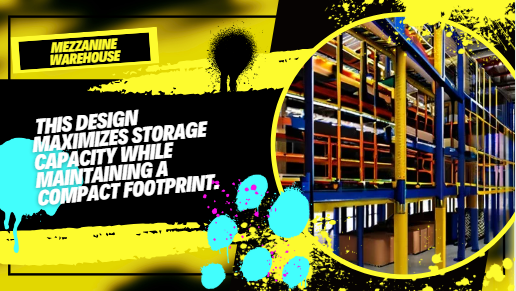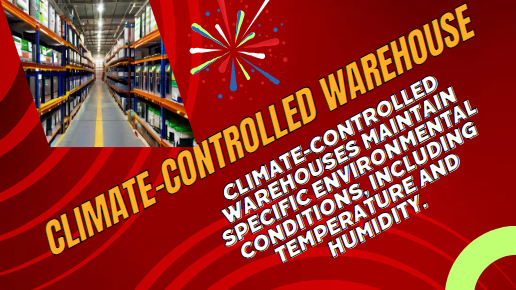- Types of Warehouses
- Introduction
- Traditional Warehouse
- Distribution Centre
- Cross-docking facilities
- E-Commerce Fulfilment Centre
- Cold Storage Warehouse
- Public Warehouse
- Private Warehouse
- Contract Warehouse
- Smart Warehouse
- Decentralized Warehouse
- On-Demand Warehousing
- Bulk Storage Warehouse
- Mezzanine Warehouse
- Multi-storey Warehouse
- Rail-Served Warehouse
- Climate-controlled Warehouse
- Pharmaceutical Warehouse
- Retail Warehouse
- Container Freight Station (CFS)
- Final Thoughts
Types of Warehouses
warehouse Types Comprehensive overview. Warehouses play a vital role in the global supply chain, acting as storage and distribution centers for a variety of industries. The type of warehouse used depends on the specific requirements of the goods stored and the processes involved. In this comprehensive document, we will discuss about the different types of warehouses, their functions, and their importance in modern logistics and supply chain management.
Introduction to warehouse Types
Warehouses Types are essential components of the modern supply chain. They act as storage facilities for goods in various stages of production and distribution. The type of warehouse chosen for a particular operation depends on the nature of the goods, storage requirements and the logistics processes involved.

Traditional Warehouse
Traditional warehouses are the foundation of the storage industry and can be classified into several types:
Dry Storage Warehouse
Dry storage warehouses are designed for storing non-perishable goods such as consumer products, electronics, and textiles. They are equipped with shelves, racks and pallets to efficiently maximize storage space.
Refrigerated Warehouse
Hazardous Materials Warehouse
These warehouses are specially designed to safely store hazardous materials and chemicals. They follow strict safety and environmental regulations to prevent accidents and protect the environment.
Bonded Warehouse
Bonded warehouses are used to store imported goods before clearing them through customs. This allows businesses to defer import duties and taxes until the goods are released for domestic consumption.
Automated Warehouse
Automated warehouses use advanced technology such as robots and conveyor systems to automate various warehouse tasks. They are particularly efficient for high-volume and high-precision operations.
Distribution Centre
Distribution centers are warehouses that play a central role in the distribution of products to retailers and end customers. They are strategically located to reduce shipping times and improve order fulfillment efficiency.
Cross-docking facilities
Cross-docking facilities reduce storage time by unloading incoming goods from one transport vehicle and loading them directly onto another for outbound delivery. This approach reduces storage costs and speeds up the delivery process.
E-Commerce Fulfilment Centre
E-commerce fulfilment centres are designed to handle online retail orders efficiently. They focus on fast order processing, inventory management and order picking to meet the demands of e-commerce customers.

Cold Storage Warehouse
Cold storage warehouses are a subcategory of refrigerated warehouses and are designed for long-term storage of frozen and chilled goods such as meat, seafood, and ice cream.
Public Warehouse
Public warehouses are third-party facilities that provide storage and distribution services to multiple customers. They provide flexibility and cost-effectiveness by sharing resources among multiple businesses.

Private Warehouse
Private warehouses are owned and operated by a single company, allowing them complete control over their storage and distribution operations. Companies with specific needs or large inventories prefer this option.

Contract Warehouse
Contract warehouses are operated by third-party logistics providers (3PLs) under contract with a business. These agreements offer flexibility and scalability, helping companies adjust their storage and delivery needs as needed.
Smart Warehouse
Smart warehouses use technologies such as IoT (Internet of Things), RFID (radio-frequency identification), and automation to optimize operations. They provide real-time data and analytics for better decision making.
Decentralized Warehouse
Decentralized storage involves many small storage facilities dispersed geographically. This approach is suitable for companies aiming to reduce transportation costs and improve regional inventory management.
On-Demand Warehousing
On-demand warehousing is a flexible solution where businesses can rent warehouse space as needed. This is beneficial for companies with seasonal demand or expanding their presence into new markets.
Bulk Storage Warehouse
Bulk storage warehouses are specialized for storing large quantities of a single product, such as grain, liquids or minerals. These warehouses are designed for efficient bulk management.

Mezzanine Warehouse
Mezzanine warehouses maximize vertical space by incorporating mezzanine floors. This design maximizes storage capacity while maintaining a compact footprint.
Multi-storey Warehouse
Multi-storey warehouses are designed vertically to make maximum use of limited urban space. They are common in densely populated areas and are often used for e-commerce operations.
Rail-Served Warehouse
Rail-served warehouses are strategically located near railroads, enabling efficient transportation of goods by train. This reduces reliance on trucking and long distance shipping can be cost effective.

Climate-controlled Warehouse
Climate-controlled warehouses maintain specific environmental conditions, including temperature and humidity. These facilities are used for goods such as fine art, sensitive electronics, and pharmaceuticals.

Pharmaceutical Warehouse
Pharmaceutical warehouses are equipped with strict temperature controls and safety measures for the storage and distribution of sensitive medical products.
Retail Warehouse
Retail warehouses are strategically located near retail outlets to facilitate rapid re-stocking. They often handle a wide variety of goods for a particular retail chain.
Container Freight Station (CFS)
Container freight stations are designed to handle cargo transported in containers, usually located at ports or inland depots. They facilitate consolidation and deconsolidation of containerized cargo.
Final Thoughts
Ultimately, the various range of warehouse types reflects the specific needs and challenges of businesses in different industries. Warehousing has become a critical element of the supply chain, offering a wide range of solutions to meet the demands of modern commerce. Selecting the right type of warehouse is essential for efficient storage, distribution and overall success in today’s competitive market.
Understanding the different types of warehouses and their unique characteristics allows businesses to make informed decisions about their storage strategies, ultimately improving their overall efficiency and customer service. As the supply chain continues to progress, the types and functions of warehouses will continue to change to adapt to the changing demands of a dynamic global economy.
Similar Topic: https://logisticbook.com/need-for-warehouses-role-in-supply-chain/
Frequently Asked Questions
What are the main types of warehouses?
The main types of warehouses include distribution warehouses, fulfillment centers, cold storage warehouses, and cross-docking facilities.
What is a distribution warehouse?
A distribution warehouse serves as a storage facility for goods before they are distributed to customers or retail stores. It usually receives shipments from manufacturers or suppliers and fulfills orders based on demand.
What is a fulfillment center?
A fulfillment center is a specialized warehouse that is primarily used for processing and shipping online orders. It is often operated by e-commerce companies and is equipped with technology to efficiently pick, pack, and ship individual items to customers.
What is a cold storage warehouse?
Cold storage warehouse is designed to store perishable goods such as food, pharmaceuticals and other temperature-sensitive products at controlled temperatures. These warehouses are equipped with refrigeration or freezing systems to maintain the required temperature level.
What is cross-docking feature?
A cross-docking facility enables goods to be transferred directly from inbound to outbound trucks with minimal or no storage time in between. It facilitates faster flow of goods through the supply chain, reducing inventory holding costs and transit times.
How do businesses decide what type of warehouse to use?
Businesses consider factors such as the nature of their products, distribution channels, order fulfillment requirements, and customer demands when selecting the type of warehouse to use. For example, businesses with perishable goods may opt for cold storage warehouses, while e-commerce companies may choose fulfillment centers for faster order processing.
Are only goods stored in warehouses?
While storage is a primary function of warehouses, modern warehouses often provide additional services such as order fulfillment, inventory management, kitting, packaging, labeling, and value-added services such as customization or assembly.
Are there specialized warehouses for specific industries?
Yes, some industries may require specialized warehouses to suit their specific needs. For example, pharmaceutical companies may use temperature-controlled warehouses to store vaccines and drugs, while automotive manufacturers may use parts distribution centers to manage spare parts inventory.
Can businesses use a combination of warehouse types?
Yes, businesses can use a combination of warehouse types to optimize their supply chain operations. For example, a company may use distribution warehouses to store bulk inventory and fulfillment centers for order processing and shipping.
How do advances in technology impact warehouse operations?
Advances in technology such as automation, robotics, warehouse management systems (WMS), and real-time tracking systems have significantly transformed warehouse operations, increasing efficiency, accuracy, and productivity. These technologies streamline tasks such as inventory management, order picking, and transportation, thereby increasing overall supply chain performance.

Very well presented. Every quote was awesome and thanks for sharing the content. Keep sharing and keep motivating others.